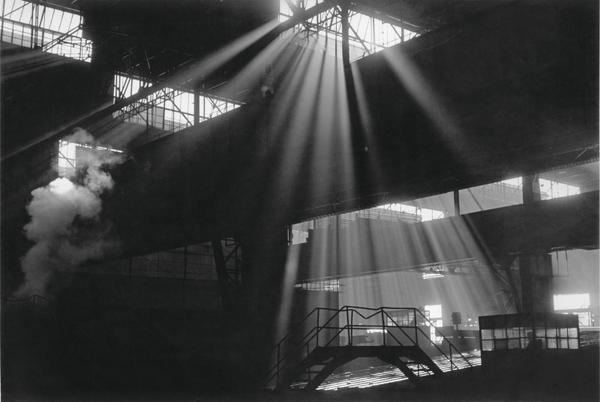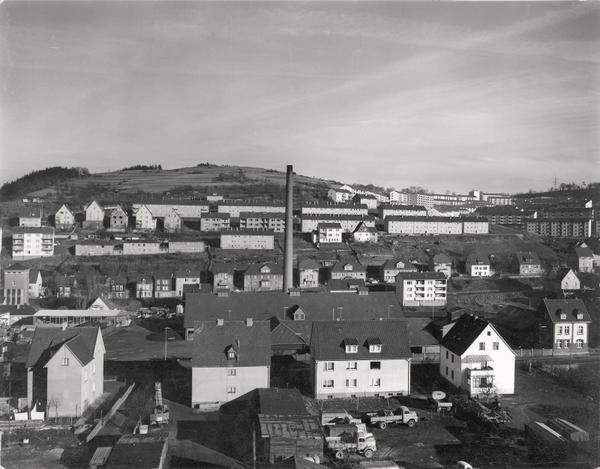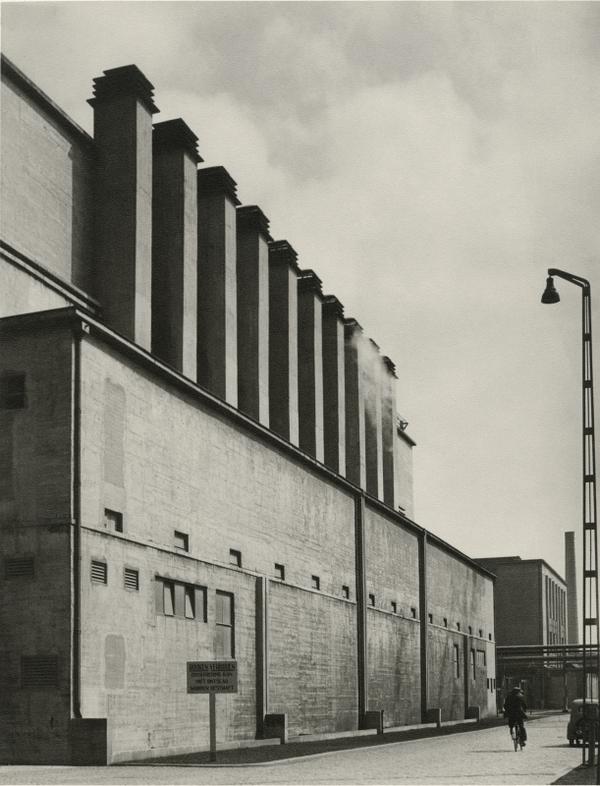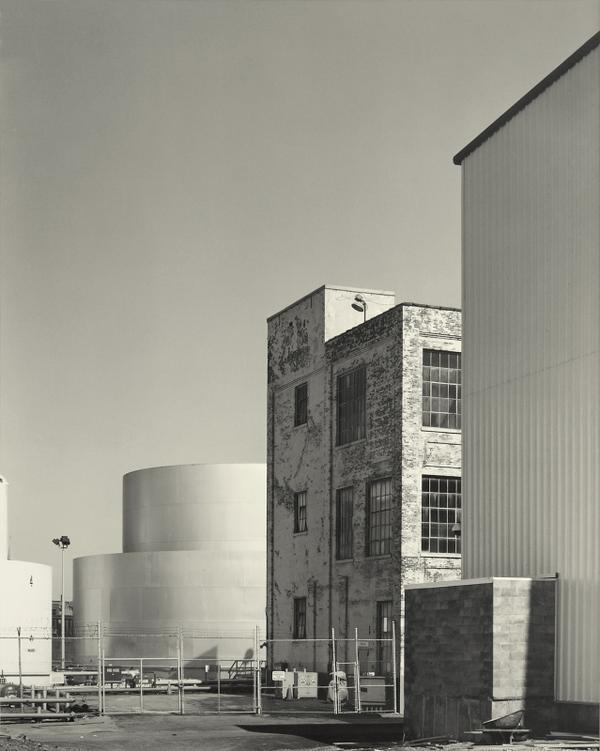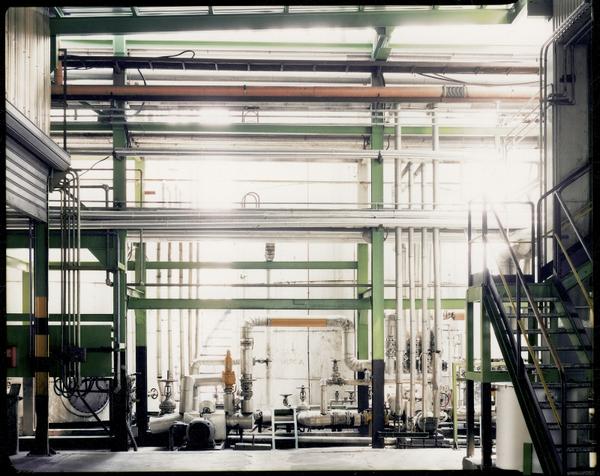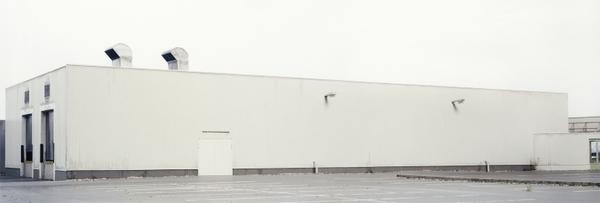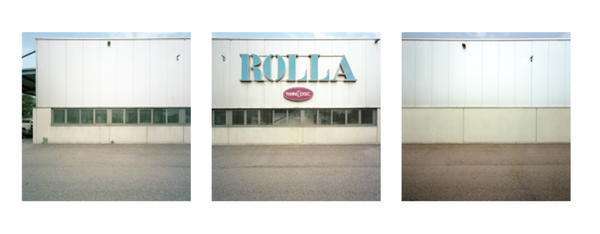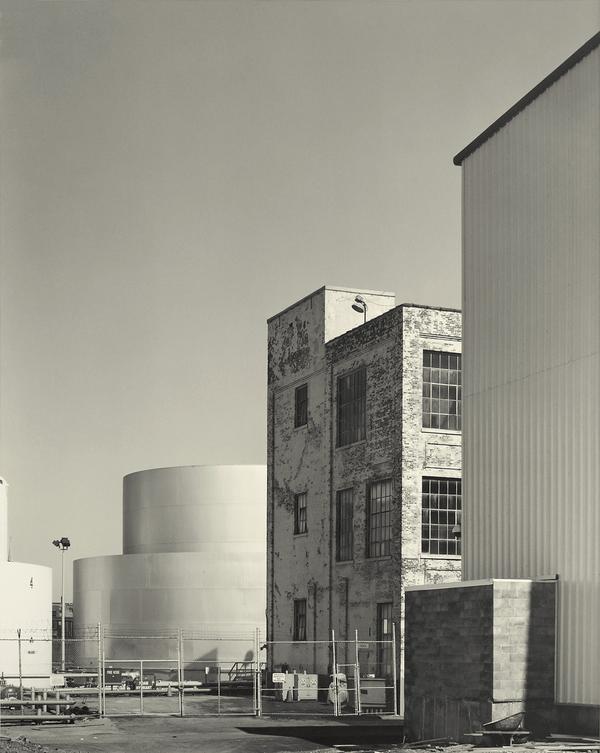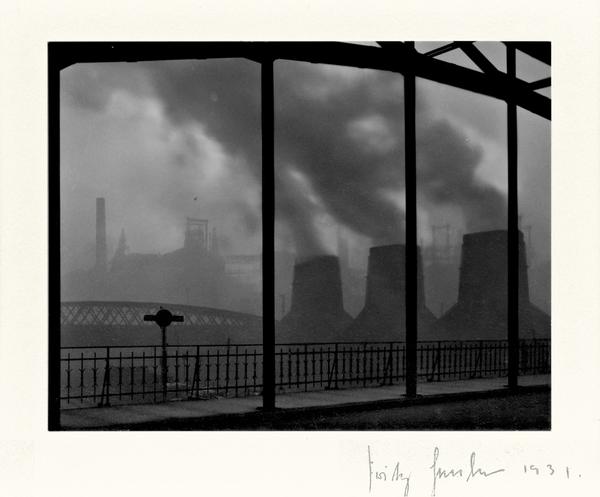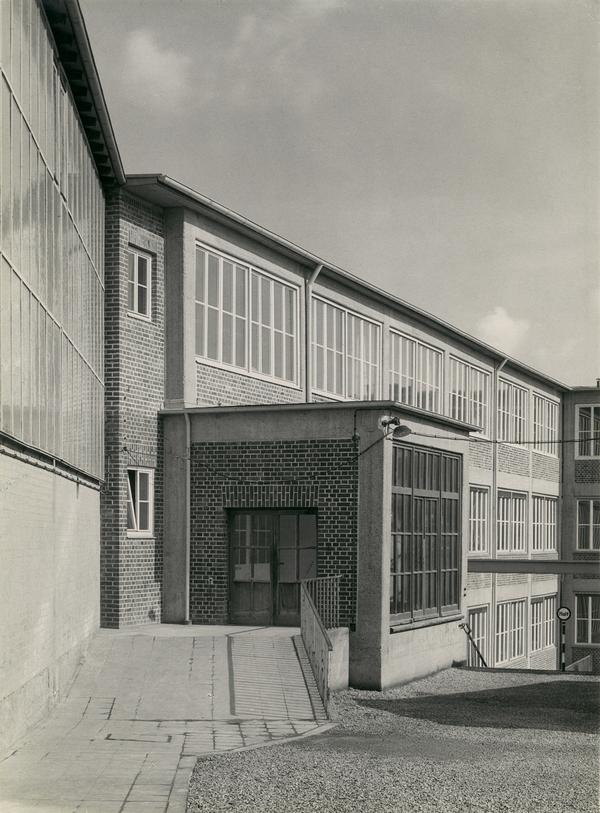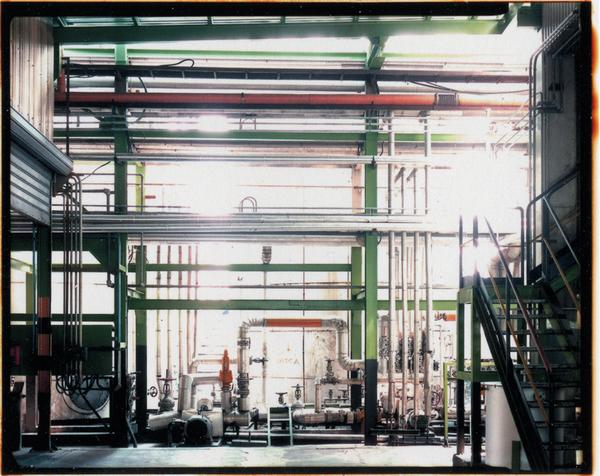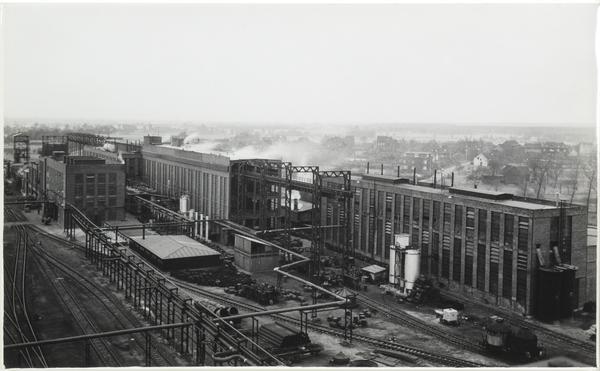Factory
27.10.2018 - 27.01.2019
Factory is the fifteenth exhibition held in the ex-kindergarten of Bruzella, home of the Rolla Foundation. The photographs are from the private collection of Rosella and Philip Rolla. The exhibition is dedicated to man that does things properly.
As the economist Christian Marazzi writes in the introductory text, the selected photographs are “a representation of the finest 20th century material culture, of that cultural materialism in which people learn and improve through the things they produce, in which their comprehension of the process of making allows them to understand how things may generate social, political, and religious values.”
The exhibited authors are: Tom Baril, Bernhard Becher, Kurt Blum, Oliver Boberg, Vincenzo Castella, Giuseppe Chietera, Ruth Hallensleben, Fritz Henle, Christof Klute, Anthony Linck, Werner Mantz, Enrico Minasso, Albert Renger-Patzsch, Fabio Tasca, James Welling, Ludwig Windstosser.
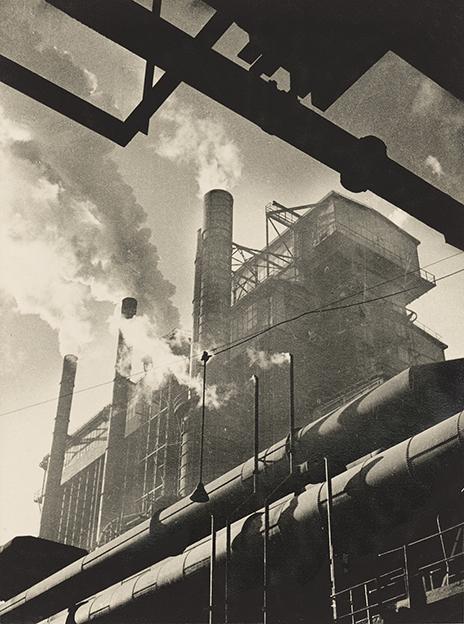
Albert Renger-Patzsch
The Chemical Factory öeunawerke in Merseburg, 1930s
vintage gelatin silver print
16 x 12.3
Tom Baril's photographs of flowers and architecture, are perfect graceful compositions and their vintage, sepia-toned look pay homage to the early pioneers of the photographic medium. Baril relies largely on analog methods such as collodion processing, a technique he learned while working for Robert Mapplethorpe in the 1980s.
Bernhard Becher, known as Bernd studied painting at the Stuttgart Academy of Fine Arts from 1953 to 1956 and then turned to printmaking with Austrian Karl Rössing at the Düsseldorf Academy. His family had for generations worked in industry in the Ruhr area, which, however, just in the 1950s began to downsize. Bernd then decided to devote himself to illustrations concerning the family's working environment. In 1957 he photographed a mine that was to be decommissioned so that he could use the photos as working material; as a result of this experience, he realized that he had an interest in photography. At the Academy, he met student Hilla Wobeser, who taught him photography, and together they made their first photographic reportage in the Ruhr region. In 1961 they married and began working as photographers for the Troost advertising agency in Düsseldorf.
After an apprenticeship as a photographer and studies at the School of Arts and Crafts in Bern, Kurt Blum became a photographer for the National Library from 1944 to 1954. He created a unique series of portraits of artists such as Picasso, Giacometti, Rothko, Léger, and many others, named "Au milieu des artistes." He later became a freelancer and as an industrial photographer and documentary filmmaker he worked for various industrial company. In 1981 he opened a painting and photography gallery in Praz/Vully. He was a founding member of the "groupe carré" and a member of the "Kollegium Schweizerischer Fotografen."
He studied art history at the University of Würzburg and painting at the Academy of Fine Arts in Nuremberg. His works deal with the non-places of our urban environment and are based on an extensive photographic archive from which he selects details. He produces small models that are then photographed. His images show emotionally charged non-places, places so familiar that they could be anywhere and nowhere. The videos present urban views and nocturnal landscapes that seem to be based on cinematic scenarios: a deserted bridge, a country road during a thunderstorm, an eerie factory - romantic, luminous backdrops and metaphors for the absence of people and reality itself.
Italian photographer, guitarist and filmmaker, in 1975, after studying Cultural Anthropology at "La Sapienza" University in Rome, he began his photographic activity. One of his most important works is Private Geography, color photographs of domestic interiors made between 1975 and 1982. In 1976 he took a trip through the southern United States, where he made, together with Lucio Maniscalchi, the 16mm film "Hammie Nixon's People," focusing on the colors and sounds of African American society. The most important works are "Nomadic Cities," about contemporary Western cities, and "Buildings," urban portraits shot from very high, but never aerial positions.
Lives and works in Milan. Italy
Architect, photographer. He has taken courses in photography at the City College of San Francisco in 1992, and later graduated from the School CFP Riccardo Bauer of Milan (2001).
Between 1931 and 1934 she worked as an apprentice for the famous portrait and landscape photographer Elsbeth Gropp. In 1934, she opened her own studio. After training in portrait photography, she took up her predestined role as an industrial photographer. Her work is not only a poetic vision or a technical experiment but is also a testimony to the historical period she lived in, Germany during the 20th century. Very little room is left to individualism in the name of a more global vision. In 1945, fearing that the allied forces would confiscate all her photographic equipment and archives, she put all this material in three boxes which she buried in the forest of Wiehl. Three years later, two of the three boxes were found with their contents undamaged and she was able to resume her photographic activity.
His preference for the Rolleiflex camera earned him the nickname of Mr. Rollei. He started as self-taught in photography in the Twenties. In 1936 he emigrated to New York where he lived until 1948. He had a career spanning more than 60 years, during which he amassed an archive of more than 110,000 negatives. Images of Europe, India, Japan, Hawai, United States, Mexico, and the Caribbean.
After studying Theology at the University of Münster (1986-88) and Philosophy at the University of Cologne (1990-1995), he studied Photography with Bernd Becher and Thomas Ruff at the Academie of Fine Arts in Düsseldorf (1995-2002). He graduated as a Master-Student and has since exhibited with the Gallery Löhrl (Mönchengladbach, Germany), Galeria Maior (Pollenca, Spain), Stiftung St. Matthäus (Berlin) and Cons Arc Gallery (Chiasso, Switzerland).
He was a Life magazine photographer from 1945 to 1954. The two great loves of his life were flying and photography. He left Life magazine to become a freelance photographer specializing mainly in aircraft and industrial photography.
Werner Mantz is known as one of the most important photographers of the Neues Bauen movement of modernist architecture in Cologne in the 1920s. Born and raised in Cologne, he opened a photography studio in 1921. Initially he made portraits of famous intellectuals, artists and politicians. In 1926 he began receiving assignments as an architectural photographer. Architecture magazines such as Bauwelt, Die Form and Bauwarte often published his work. It was these images that made Cologne's modernist architecture known beyond the city limits. In 1932 Mantz opened a second studio in Maastricht, and in 1938 he moved to the Netherlands. There he returned to portrait photography and specialized in portraits of children.
He has been practicing as a photographer since 1986. He works mainly in advertising photography, architecture, portraiture, industrial and anthropological reportage. From his meeting, in 1997, with photographer Eric Hartman, former president of Magnum Photos, derived both an inescapable attraction to black-and-white and an important turning point in his own photographic research. Constantly engaged in research through the less conventional use of photographic materials, for some time now he has favored the pinhole technique, that is, the use of medium- and large-format handmade cameras without lenses, and toy cameras, all strictly film.
He began taking photographs at the age of 12. After military service during World War I, he studied chemistry at Dresden Technical College. In the early 1920s he worked as a photographer for the Chicago Tribune before going freelance. Appointed professor and head of the department of pictorial photography at the Folkwangschule in Essen, he left the position after only two semesters because of Nazi oppression. Albert Renger-Patzsch is considered one of the most important figures of New Objectivity photography.
He received a degree in Slavic philology. He works as a photographer and translator in Como. During the early 90s, he began to work as a photographer for a few national newspapers. This was the beginning of a personal journey which brought him to discover architectural and landscape photography. Lives in Como, Italy.
Is an artist a photographer and educator. He attended Carnegie-Mellon University where he studied drawing with Gandy Brodie and at the University of Pittsburgh where he took modern dance classes. Welling transferred to the Institute of the Arts in Valencia, California in 1971. He studied with John Baldessari, Wolfgang Stoerchle and Jack Goldstein. He began to make photographs in 1976 using a 4x5 view camera. His first body of work, Los Angeles Architecture and Portraits, consisted of photographs of his friends and local architecture. In 1978 he moved to New York and began a sequence of abstract photographs. In 1995 he joined the the Department of Art at the University of California, Los Angeles. He Currently teaches in the Visual Art Program at the Lewis Center at Princeton University.
Ludwig Windstosser was a photographer of the post-war West German period. In the 1950s and 1960s, the co-founder of the BFF Professional Association for Freelance Photographers and Film Designers. He worked mainly as an industrial photographer for the coal and steel industry in the Ruhr area. As a member of the avant-garde group fotoform he made a significant contribution to a new visual language.

Pages: 48 Softcover
Illustrations: 28 four-color print
Language: Italian/English
Edition: Fondazione Rolla, 2018
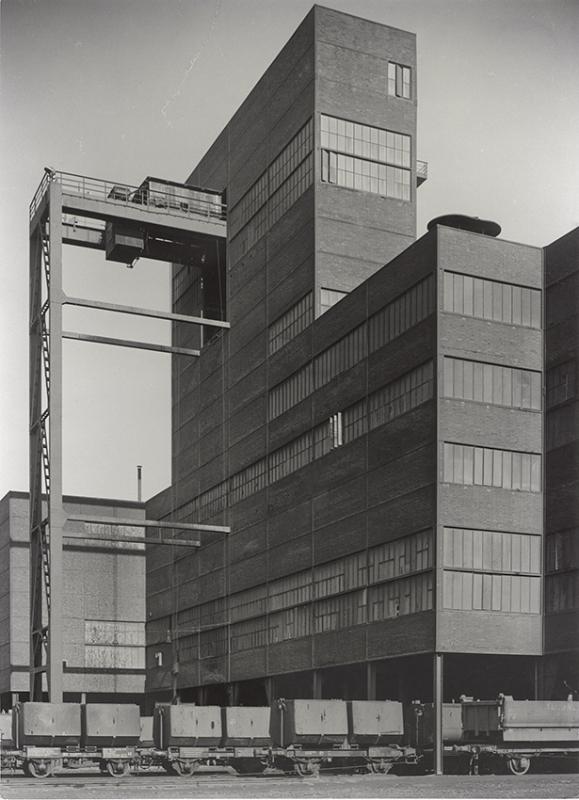
Albert Renger-Patzsch
Zeche Adolf Von Hansemann, 1940
vintage gelatin silver print
22.6 × 16.6 cm
